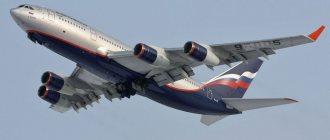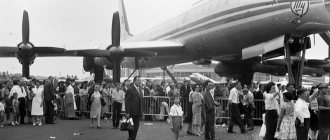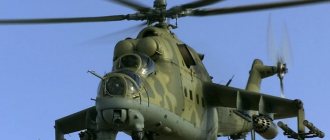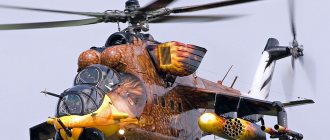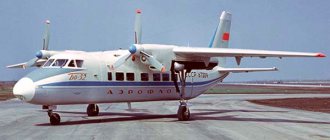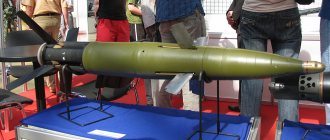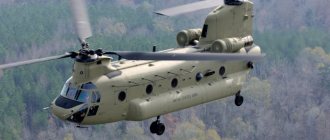History of creation
In 1993, the chief designer of the Antonov ANTK S.V. Merenkov began developing a new aircraft for regional routes, which was supposed to replace the veterans of the An-24 and An-26 who had worked for a long time and reliably in this sector of air transportation. As soon as the general concept of the machine was clarified, the development of details and the search for a power plant that meets the customer’s requirements began.
In 1997, the first prototype of the vehicle was ready, and on September 17 of the same year, the crew under the control of test pilot A.K. Khrustitsky lifted the car into the air and performed an installation flight. Flight tests began and were successfully completed in 1999. Already on October 11, 1999, at the aviation plant in Kharkov, the first production An-140 was tested in the air.
An-140 in the sky
From 2001 to 2015, the IrAn-140 (licensed version of the An-140 ) was produced individually in Iran in the city of Shahinshahr; in 2005, production of the An-140 at an aircraft plant in Samara.
At the International Aviation Show in Istanbul in 2004, a modification of the An-140-100 , in which the wing size became one meter larger, the cockpit and instrumentation were improved, the power plant nacelles acquired a different shape, and the flight range and altitude increased. This modification significantly reduced engine noise and reduced the level of toxic emissions into the atmosphere.
Based on the original An-24 aircraft, the following modifications were made:
- An-2A is a modification designed to carry 44 passengers.
- An-24B is a passenger version capable of carrying up to 52 passengers.
- An-24R is a variant of the aircraft for radio reconnaissance needs.
- An-24RT - military transport modification of the aircraft
- An-24ShT - staff version of the aircraft
- An-24FK - a variant of the aircraft designed for aerial photography
- An-24PP - version equipped with instruments for analyzing radiation pollution
- An-24PS is a search and rescue version of the An-2.
- An-24LP is a modification of the An-2 aircraft designed to extinguish forest fires.
An-24 interior diagram
Other modifications of the An-24 were also produced and were in projects, designed to perform a wide range of other tasks.
Over the entire period of serial production, from 1962 to 1979, about 1,300 An-24 aircraft were produced. Today, according to various estimates, about one hundred of these machines are in operation.
The An-24 aircraft was also produced in China, since 1984, under the designation Xian Y-7. Since 2000, China has continued to produce a modified version of this aircraft, called the Xian MA60. Today, the successor to the An-24 aircraft is the An-140 cargo-passenger turboprop aircraft, designed by the Ukrainian state-owned enterprise ANTK Antonov.
The design of the An-140 aircraft
The aerodynamic layout of the An-140 is traditional for Antonov's aircraft - it is a monoplane with a high wing, a power plant of two engines and a powerful vertical tail. The high location of the wing was chosen for reasons of less ingress of foreign objects when operating the vehicle from unpaved airfields.
The wing mechanization is usual for machines of this class - these are double-slotted flaps and ailerons with trimmers; the developers did not install slats. The flaps have five fixed deflection positions - three for takeoff and two for landing.
The power plant of the airliner consists of two TV-117VMA engines; similar engines were previously used on Mi-8 and differ only in the design of the gearbox and transmission. An auxiliary power unit is located in the rear fuselage, which serves to autonomously start the main engines and provide electricity to the main aircraft systems on the ground.
An-140
Of particular interest is the AB-140 propeller; it has six blades and its diameter is 3.72 meters. On the AV-140 the pitch is variable in flight, the control is carried out automatically by hydraulics depending on the selected mode, the propeller is reversible, which allows you to significantly reduce the landing distance - this is especially important when landing on short unpaved strips.
The crew consists of two people - the commander and the right pilot. The cockpit is quite spacious, the instrument panel is made according to modern ergonomics, equipped with digital displays that provide all the information about the flight, navigation situation and operation of the power plant.
An-140 cockpit
The aircraft's landing gear is tricycle, retractable in flight, with low-pressure wheels, which is necessary to improve maneuverability when operating from unpaved airfields.
The passenger cabin accommodates 52 people, passengers are accommodated in comfortable and comfortable chairs. The salon surprises with its original design solution and thoughtfulness of the functional details of the interior. For a pleasant and relaxing time during the flight, all seats are equipped with multi-channel audio systems, and individual ventilation allows you to create the desired microclimate; anti-noise panels in the cabin absorb the noise of running engines. Passengers have access to a large luggage compartment, and if there is not enough space in it, they can use an additional compartment located under the cargo compartment.
Salon of the An-140 airliner
Modifications of the An-28 aircraft
The standard model of this aircraft is a cargo-passenger one, it can be converted from one type to another. For more severe operating conditions, an aircraft with a large fuel reserve was created. To cover long distances, this modification was called An-28A. The main area of use is polar latitudes. There are also military versions of this aircraft; they are mainly used by paratroopers to land on enemy territory. A model called An-28RM has been developed, which is intended for patrolling the territory and rescue operations. The most powerful modification is the An-28 with the additional name “Sryker”; it is equipped with two engines with a capacity of 1100 horsepower each. Moreover, the working propellers have not three, but five blades.
Statistics show that during the entire period of operation until September 2012, only 25 An-28 aircraft were lost.
The Antonov An-28 is a light multi-role, twin-engine, short takeoff and landing aircraft. The main purpose of the aircraft is to transport people to local air destinations, transport cargo, geological surveys, fire patrols, evacuate the wounded, search and rescue and reconnaissance operations. The An-28 is designed to transport up to 18 people over an average distance of 1,500 kilometers.
The aircraft has an all-metal fuselage with a high wing, which is a two-spar structure reinforced with metal struts. The wing has a large span and is equipped with automatic flaps, which allows the aircraft to maintain stable flight at low speeds and high angles of attack, and also ensures takeoff and landing at a steep trajectory angle. Under the wings of the aircraft, in the nacelles, TVD-10B gas turbine engines are located. The passenger cabin of the aircraft can be easily converted into a cargo compartment.
An-28 photo
The An-28 was designed by the Antonov Design Bureau, based on the multi-purpose, light aircraft An14, which in turn was built in 1958. And therefore, the aircraft project was initially designated An-14M. While maintaining the design of a twin-engine monoplane, the new aircraft, compared to its predecessor, received a more elongated fuselage. Also, instead of piston engines, the aircraft was equipped with GTD-550SA turboprop engines with a power of 640 hp.
The first test flight of the An-14M prototype took place on April 30, 1968. But the start of flight tests of the aircraft was delayed until 1972. With the start of flight tests, TVD-850 engines with a maximum power of 810 hp were installed on the aircraft. From that moment on, the An-14M aircraft received a new designation - An-28. The first flight of the aircraft, now as the An-28, took place on January 29, 1973. Later, the aircraft's engines were replaced with TVD-10B engines with a power of 960 hp. The An-28 pre-production aircraft made a flight with these engines in April 1975. After passing state tests, in 1986, the aircraft was put into production. But after the production of several production An-28 aircraft, in 1987, the production license was transferred to the Polish aircraft plant PZL Mielec.
An 28 Salon
The first Polish An-28 took to the skies on July 22, 1984. The aircraft was later modified in 1992 and designated PZL M28 "Skytruck". This modification of the aircraft is equipped with fuel-efficient Pratt & Whitney PT6A-65B engines, made in Canada, with a power of about 1,100 hp. The PZL M28 aircraft is also equipped with new Bendix-King avionics. The production of this modification of the aircraft began in 1993 and is still produced today at the Polish aircraft plant in the city of Mielec.
Flight technical data
- Crew - 2 people
- Aircraft length - 22.6 m
- Aircraft height - 8.23 m
- Wingspan - 24.5 m
- Unloaded aircraft weight - 12810 kg
- Maximum take-off weight - 21.5 t
- Maximum load - 52 people or 6 tons of cargo
- Engines - 2 x TV-117MVA
- Largest fuel capacity - 4440 kg
- Cruise speed: 460–540 km/h
- Practical range - 2320 km
- Ceiling - 8232 m
- The required runway length is 880 m.
An-140 in Iran
Photo of An-10
Similar
An-24 Engine. Dimensions. Range of flight. Practical ceiling. Story
Tu-154 Speed. Dimensions. Weight. Capacity. Fuel consumption. Story
IL-96 Speed. Dimensions. Capacity. Story. Load capacity
Yak-40 Engine. Dimensions. Capacity. Range of flight. Practical ceiling. Story
Tu-144 Engine. Dimensions. Range of flight. Practical ceiling. Story
IL-62 Engine. Dimensions. Range of flight. Practical ceiling. Story
IL-14 Engine. Dimensions. Story. Range of flight. Service ceiling
IL-18 Engine. Dimensions. Range of flight. Practical ceiling. Story
An-2 Engine. Dimensions. Story. Range of flight. Service ceiling
An-148 Speed. Price. Dimensions. Story. Capacity. Fuel consumption
An-14 Pchelka Speed. Dimensions. Weight. Capacity. Story. Load capacity
Tu-114 Speed. Dimensions. Weight. Capacity. Story. Load capacity
Yak-42 Speed. Dimensions. Capacity. Fuel consumption. Story. Range of flight
IL-114 Engine. Dimensions. Range of flight. Service ceiling
An-3 Engine. Dimensions. Range of flight. Service ceiling
Yak-12 Speed. Dimensions. Weight. Story. Capacity. Load capacity
Tu-334 Speed. Dimensions. Weight. Story. Capacity. Range of flight
Yak-52 Engine. Dimensions. Range of flight. Service ceiling
Tu-204 Engine. Dimensions. Range of flight. Practical ceiling. Fuel consumption. Price
Tu-104 Engine. Dimensions. Story. Range of flight. Service ceiling
IL-86 Engine. Dimensions. Range of flight. Service ceiling
Su-29 Engine. Dimensions. Range of flight. Practical ceiling. Story
Tu-134 Speed. Dimensions. Capacity. Fuel consumption. Story. Range of flight
Su-31 Speed. Price. Dimensions. Story. Load capacity
Tu-124 Speed. Dimensions. Capacity. Weight. Story. Range of flight
An-10 Speed. Dimensions. Weight. Story. Capacity. Load capacity
Be-30 / Be-32K Engine. Speed. Dimensions. Range of flight. Service ceiling
An-140 Speed. Price. Dimensions. Capacity. Fuel consumption. Story
An-38 Speed. Dimensions. Weight. Story. Capacity. Range of flight
Be-103 Speed. Price. Dimensions. Weight. Story. Capacity
IL-103 Engine. Dimensions. Capacity. Load capacity. Range of flight. Service ceiling
Su-26 Engine. Dimensions. Range of flight. Service ceiling
Yak-58 Speed. Dimensions. Weight. Story. Range of flight. Service ceiling
ANT-20 Maxim Gorky Speed. Story. Engine. Dimensions. Range of flight
LK-1 (NIAI-1 Plywood-2) History. Dimensions. Engine. Range of flight
MiG-8 Duck Engine. Dimensions. Story. Range of flight. Service ceiling
Tu-110 Engine. Dimensions. Range of flight. Practical ceiling. Story
Aviatika-MAI-890 Engine. Dimensions. Speed. Range of flight. Service ceiling
Yak-50 Speed. Dimensions. Story. Range of flight. Service ceiling
Yak-55 Speed. Dimensions. Weight. Story. Range of flight. Service ceiling
ANT-35 (PS-35) Engine. Dimensions. Story. Range of flight. Service ceiling
IL-12 Engine. Dimensions. Story. Range of flight. Service ceiling
Airplane K-5 Engine. Dimensions. Story. Range of flight
Yak-53 Dimensions. Range of flight. Weight. Service ceiling
KhAI-1 Engine. Dimensions. Story. Range of flight. Service ceiling
MAI-223 Kitten Photo. Video. Characteristics. Engine
AIR-6 Engine. Dimensions. Story. Range of flight. Service ceiling
PS-89 (ZIG-1) Engine. Dimensions. Story. Range of flight. Service ceiling
SAM-5 Engine. Dimensions. Story. Range of flight. Service ceiling
Airplane Steel-3 Engine. Dimensions. Story. Range of flight
Airplane ANT-1 Engine. Dimensions. Story. Range of flight
Airplane K-1 Engine. Dimensions. Story. Range of flight
Airplane U-8 Little Humpbacked Horse History. Dimensions. Engine
You have no rights to post comments
Five accidents in the sky of An-140
- When landing at the airfield of the Iranian city of Ishafan, the An-140 collided with a mountain. The disaster occurred on December 23, 2003, killing 44 people - everyone on board.
- On August 12, 2005, an An-140 was landing with one engine failure; the pilots failed to brake the aircraft on the runway and it rolled off the runway. The liner was damaged, but there were no casualties.
- After takeoff from Baku airport on December 23, 2005, the An-140 crashed into the Caspian Sea. Later it turned out that in completely cloudy conditions and strong bumps, the crew lost control due to the failure of the main and reserve attitude indicators; their readings did not correspond to the actual position of the aircraft. All crew members and passengers were killed - a total of 23 people.
- On February 15, 2006, while performing a training flight, two An-140 , killing five pilots - this happened in Iran near the city of Shahin Shahri.
- On September 6, 2008, landing with the front strut not extended, the An-140 landed at Boryspil airport on scattered foam, no one was injured, and after 20 days the aircraft was performing regular flights.
An-140 An-140 An-140 take off
Disasters and accidents of An-24
According to statistics, at the beginning of 2014, 162 AN-24 aircraft were lost. All losses were associated with factors such as plane crashes; some vehicles were destroyed on the ground during hostilities. As a result of accidents, over the entire period of use of this aircraft, 2,120 people died, 29 of them were on the ground during the crashes. They tried to hijack the An-24 passenger plane 33 times, and 4 people died in these attempts.
Development of a project for a short-haul aircraft for local airlines with turboprop engines began in connection with the need to replace the outdated Il-14 aircraft, which used piston engines. This project, numbered 32-40, was proposed by the Antonov Design Bureau in 1956.
After the project was approved, in 1958, development of the aircraft began. According to the technical specifications, the designed aircraft was to be used in a wide temperature range, land on small and unprepared airfields, fly with a payload of at least four tons and have a flight range of at least 500 kilometers.
An-24 photo
The plane was ready by mid-1959. It was equipped with two Ivchenko AI-24 turboprop engines with an AB-72 propeller.
On October 20, 1959, the first An-24, under the command of test pilot G. I. Lysenko, took off. At the beginning of 1961, the state testing program for the An-24 aircraft began.
The produced vehicle was reliable and required minimal ground equipment. The aircraft's thrust per unit mass was greater than that of many comparable aircraft of that time. The aircraft's engines also have a successful layout, being located on a high wing, which allows for greater protection of them and the propeller blades from foreign debris.
Upon completion of all test flights, in 1962, at the Kiev aircraft manufacturing plant, serial production of the aircraft began for the needs of the airport. The first flight on a serial An-2, with passengers on board, was carried out in September 1962. A month later, in October 1962, the An-2 began serving regularly on the Kyiv-Kherson route. Later the direction “Moscow-Voronezh-Saratov” was added.
Thanks to its robust airframe and good operational performance and not requiring large airfields, the An-24 aircraft was suitable not only for passenger flights, but also for performing many secondary tasks. For example, such as ice reconnaissance, cargo transportation, search and rescue and fire fighting operations.
An-24 interior
Characteristics of the An-28 aircraft
The An-28 is designed according to a high-wing design using a strut-type aircraft. This gives the aircraft better aerodynamic properties. Due to the fact that the landing gear does not retract into the fuselage, the aircraft loses a little in speed and aerodynamics. In this aircraft model, it is possible to install floats instead of the standard landing gear.
The aircraft has a double fin. The power unit is made up of two engines of the TVD-10 model and is equipped with reversible propellers. The cabin of this aircraft can be easily changed for various transportations. This model can be used as a passenger or cargo version, in addition as an administrative vessel.
A regular An-28 can be quickly and easily converted into a cargo transport aircraft by folding down the passenger seats to accommodate cargo. For more convenient and faster loading, the aircraft is equipped with a cargo hatch, which is located in the rear of the aircraft. The cargo compartment of the aircraft is equipped with a crane beam, which makes the loading process easier and faster. This mechanism is capable of lifting loads weighing up to half a ton.
When designing the aircraft, much attention was paid to measures that ensure flight safety in any situation, even an emergency. Flying at a high angle will lead to a loss of speed, but the plane will not stall, but is stabilized by a sophisticated automatic slats system
In such a situation, the aircraft will automatically begin to lower the front end and restore flight speed, while maintaining excellent controllability.
The Antonov Design Bureau was the first to develop and install on the An-28 aircraft a system that could independently reduce the roll of the aircraft during flight. This system allows you to safely and easily control this aircraft even with one engine running. She has a patent which is registered in France and the USA. The tail of the aircraft is designed so effectively that it allows pilots to easily control the An-28 aircraft even at low speeds.
The An-28 model aircraft is capable of flying under various meteorological conditions and in any climatic zones, regardless of the time of day. All this is possible due to the navigation system installed on board and a system that prevents icing of the aircraft body and its functional parts.
Serial production of this brand of aircraft continued until 1997. During the entire production period, 198 units of the An-28 aircraft and its modifications were manufactured.


